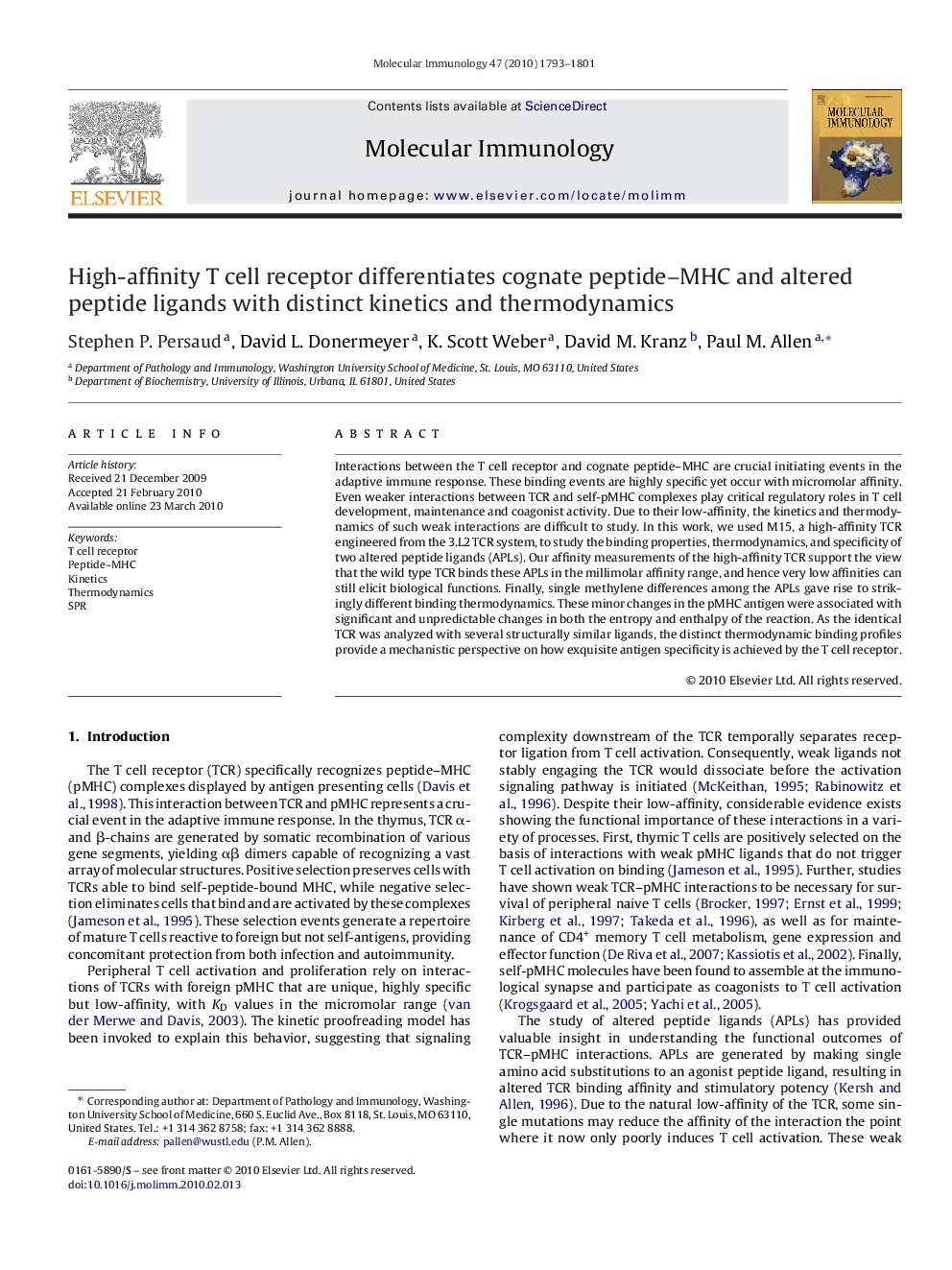| Article ID | Journal | Published Year | Pages | File Type |
|---|---|---|---|---|
| 2831776 | Molecular Immunology | 2010 | 9 Pages |
Interactions between the T cell receptor and cognate peptide–MHC are crucial initiating events in the adaptive immune response. These binding events are highly specific yet occur with micromolar affinity. Even weaker interactions between TCR and self-pMHC complexes play critical regulatory roles in T cell development, maintenance and coagonist activity. Due to their low-affinity, the kinetics and thermodynamics of such weak interactions are difficult to study. In this work, we used M15, a high-affinity TCR engineered from the 3.L2 TCR system, to study the binding properties, thermodynamics, and specificity of two altered peptide ligands (APLs). Our affinity measurements of the high-affinity TCR support the view that the wild type TCR binds these APLs in the millimolar affinity range, and hence very low affinities can still elicit biological functions. Finally, single methylene differences among the APLs gave rise to strikingly different binding thermodynamics. These minor changes in the pMHC antigen were associated with significant and unpredictable changes in both the entropy and enthalpy of the reaction. As the identical TCR was analyzed with several structurally similar ligands, the distinct thermodynamic binding profiles provide a mechanistic perspective on how exquisite antigen specificity is achieved by the T cell receptor.
